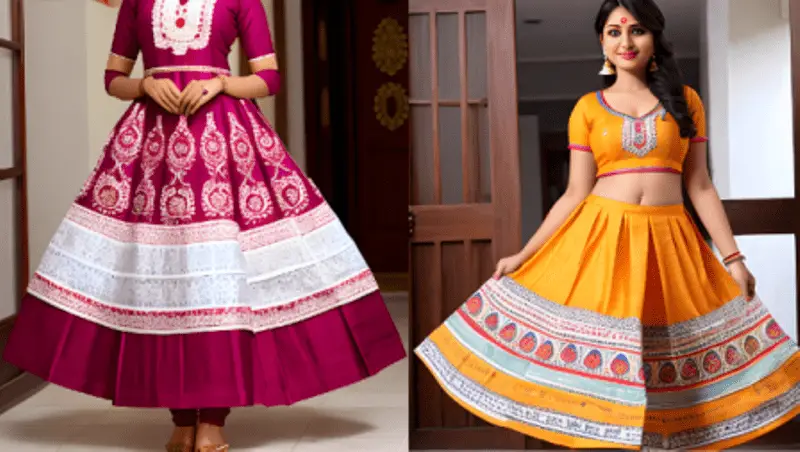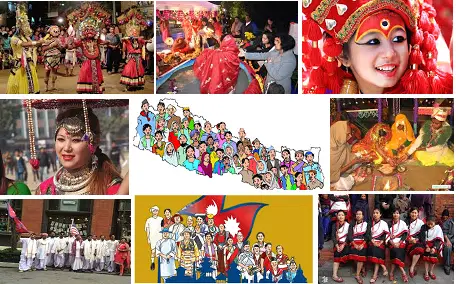Introduction
Nepal, a country with various customs and cultures, is ornamented with a vibrant tapestry of ethnic groups and their own lifestyles. The Mithila region, known for its enthralling art, literature, and clothing, is one such cultural treasure.
Mithila clothing, or “मिथिला पोषाक” in Nepali, displays the area’s particular identity and reflects its long-standing customs of Mithila. This blog explores the history, meaning, significance, and current relevance of Mithila clothing.
A Glimpse into Mithila Culture
Mithila, also known as Janakpur, is situated in the southern plains of Nepal. This region is steeped in history and mythology, with strong connections to the Ramayana, an ancient Indian epic. The renowned city of Janakpur also known as Janakpurdham is believed to be the birthplace of Sita, the central female character in the Ramayana and the daughter of King Janaka. This connection to the epic infuses Mithila culture with a sense of pride and reverence.
Mithila Art and Craftsmanship: The Foundation of Mithila Wear
The peculiar Madhubani painting art form is one of the Mithila culture’s captivating features. These beautiful and colorful paintings, which frequently include complex designs and representations of nature, animals, and deities, have come to represent the unique character of the area.
Madhubani painting is a prominent influence on Mithila wear, as these artistic motifs find their way onto traditional clothing.
Mithila women, known for their deft hands and artistic prowess, have historically crafted their clothing using the same techniques employed in Madhubani painting.
Mithila clothing is decorated with elaborate designs and lively hues as an allusion to the area’s creative history.
These clothing items not only serve as garments but also as living canvases that embody the stories and aspirations of the wearers.
Mithila Wear: A Journey Through Garments
Mithila wear includes a range of garments that are not only functional but also carry profound cultural significance. Let’s explore some of the most notable pieces:
Sari (साडी): The sari is an iconic garment in Mithila wear. It’s a long piece of cloth wrapped around the body, with one end draped over the shoulder. Saris from Mithila are known for their lively colors and intricate designs. They often feature Madhubani themes that narrate stories from mythology or depict scenes from daily life.
Lehenga Choli (लेहेङ्गा चोली): This two-piece ensemble consists of a flared skirt (lehenga) paired with a blouse (choli). The lehenga is embellished with beautiful Madhubani patterns, making it a stunning display of art and craftsmanship. It is commonly worn during festivals and special occasions.
Churidar Kurta (चुडीदार कुर्ता): This combination features a long tunic-style top (kurta) paired with tightly fitted trousers (churidar). Mithila women (men also wear) often wear churidar kurtas with a matching or contrasting dupatta (scarf), creating a harmonious ensemble that celebrates both tradition and style.
Angrakha (अंगरखा): The angrakha is a traditional frock-style top that overlaps in the front. It’s adorned with intricate embroidery and Madhubani patterns, adding an artistic touch to everyday wear.
Dupatta (दुपट्टा): The dupatta, or scarf, is an integral accessory in Mithila wear. It is often adorned with Madhubani motifs and draped elegantly over the shoulder to complete the ensemble.
The Contemporary Resurgence of Mithila Wear
While Mithila wear has deep cultural roots, it has not remained confined to the pages of history. In recent years, there has been a resurgence of interest in traditional clothing among Nepali youth and designers. This resurgence has not only preserved the heritage of Mithila wear but has also given it a contemporary twist.
Many modern designers are blending traditional Madhubani patterns with modern silhouettes to create outfits that appeal to a wide range of audiences. This fusion of tradition and modernity has breathed new life into Mithila wear, making it relevant for both formal occasions and everyday wear.
The Role of Mithila Wear in Identity Preservation
Mithila wear plays a significant role in preserving the identity of the Mithila region and its people. As Nepal continues to experience cultural globalization and influences from the outside world, traditional attire like Mithila wear serves as a strong anchor to the roots of the Mithila community. It is a symbol of cultural pride and artistry of the region.
At the end
Mithila wear (मिथिला पोषाक) in Nepal is much more than just clothing; it is a testament to the artistic legacy and cultural heritage of the Mithila region.
Mithila clothing is a celebration of heritage and a link between the past and the present thanks to its vivid colors, elaborate designs, and history. The Nepali people make sure that the beauty and significance of Mithila culture are woven into the fabric of their society for future generations by continuing to honor and restore these wonderful clothes.


